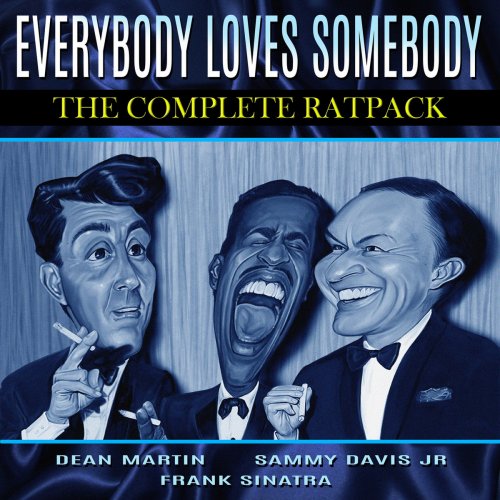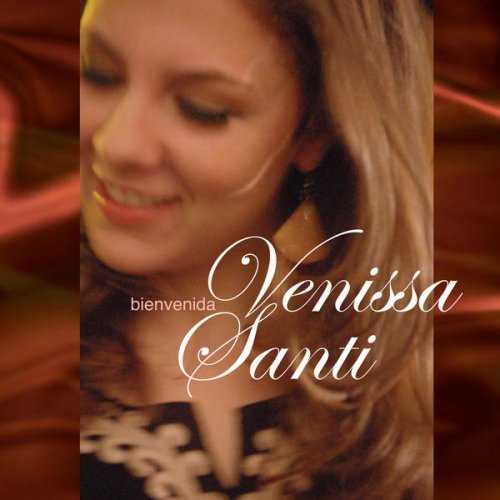Ophélie Gaillard, Edna Stern - Chopin (2010) Hi-Res

Artist: Ophélie Gaillard, Edna Stern
Title: Chopin
Year Of Release: 2010
Label: Aparté
Genre: Classical
Quality: FLAC 24bit-44.1kHz / FLAC (tracks) / Mp3 320 kbps
Total Time: 01:02:10
Total Size: 626 Mb / 281 Mb / 168 Mb
WebSite: Album Preview
Tracklist: Title: Chopin
Year Of Release: 2010
Label: Aparté
Genre: Classical
Quality: FLAC 24bit-44.1kHz / FLAC (tracks) / Mp3 320 kbps
Total Time: 01:02:10
Total Size: 626 Mb / 281 Mb / 168 Mb
WebSite: Album Preview
Sonata in G minor for cello and piano op.65 (Frédéric Chopin)
1. Allegro - Moderato 15:12
2. Scherzo - Allegro con brio 05:12
3. Largo 03:01
4. Finale - Allegro 06:25
Prelude in A minor op.28 n°2 (Frédéric Chopin)
5. Prelude in A minor op.28 n°2 02:18
Nocturne in G major op.37 n°2 (Frédéric Chopin)
6. Nocturne in G major op.37 n°2 05:53
Prelude in E minor op.28 n°4 (Frédéric Chopin)
7. Prelude in E minor op.28 n°4 02:23
Nocturne in G minor op.37 n°1 (Frédéric Chopin)
8. Nocturne in G minor op.37 n°1 06:11
Introduction & Polonaise brillante in C major op.3 (Frédéric Chopin)
9. Introduction & Polonaise brillante in C major op.3 08:54
Nocturne in E minor op.72 n°1 (Frédéric Chopin)
10. Nocturne in E minor op.72 n°1 04:10
Waltz in A minor, KK Ivb n°11 (Frédéric Chopin)
11. Waltz in A minor, KK Ivb n°11 02:31
Performers:
Ophelie Gaillard (Cello)
Edna Stern (Piano)
This is a very satisfying album, pairing two highly attuned artists. Ophélie Gaillard is a beautiful cellist. She plays with a lovely, somewhat tangy tone that is expressively produced in every register. She, like Edna Stern, is a somewhat reticent player. Gaillard never tries to bowl you over with high volume, unlike Yo Yo Ma. One hears in her tone and phrasing, perhaps, the influence of Casals. Gaillard plays a 1737 Goffriller cello, here with an 1840 bow. There is no reference to the type of strings used. I recently had the pleasure of reviewing Edna Stern’s solo Chopin recital on Naïve. After studying the modern piano with Martha Argerich, Krystian Zimerman, and Leon Fleisher, Stern in 2003 began work on the fortepiano under the guidance of Patrick Cohen. The 1843 Pleyel piano she plays on this CD features leather covered hammers; one rarely is aware of its being a percussive instrument. The Pleyel was Chopin’s favorite piano. In it one hears on this album Chopin’s preference for subtlety and singing phrasing. It is an instrument with warmth and decorum.
From the beginning of the Cello Sonata, you are particularly aware of the special balance between the instruments. This piano cannot overpower the cello. Rather, the two instruments speak with equal voices. Chopin appropriately premiered the sonata at a private concert for a few friends, including Delacroix. The cellist on that occasion also played part of it for the composer two days before his death. One of the features of the first movement in Gaillard and Stern’s hands is the exquisitely blended soft playing. In structure, the movement has elements of a fantasy. The cello seems to depict the part of a wanderer in a romantic dramatic scene. For Chopin, the cello here performs almost as an instrumental surrogate for the human voice.
The remaining three movements of the sonata are shorter altogether than the whole first movement is. The A section of the Scherzo sounds like a Schumannesque folk dance, sort of a character piece. The B section here is played lushly and passionately, truly con brio . In the Largo, Gaillard and Stern trade the melody between them with great sensitivity, creating an intimate dialogue. In the finale, both players avoid the temptation to become overindulgent in phrasing or dynamics. Their performance here has a pleasing sobriety, rendering the movement of a piece with the rest of the sonata. I think that, as sound, this recording is an ideal representation of how the sonata would come across on these instruments in a modest-sized room. If you must have the power of a modern piano, I am very fond of the recording by Ofra Harnoy and Cyprien Katsaris, but I suspect I will be returning more often to Gaillard and Stern.
The other original work for cello and piano on this album, the Introduction and Polonaise brillante , receives a reading that is both elegant and spirited. The virtuosity of the two players sounds so easy as to be taken for granted. Edna Stern also performs the two nocturnes of op. 37. In No. 1, the A section is pensive, while the B section has a gravitas that the drone-like bass of the Pleyel enhances. No. 2 features soft, luminous playing; the voicing of the chords has warmth. Gaillard and Stern also have arranged four solo piano pieces for cello and piano. The two preludes are not completely successful transcriptions. Although the cello here is well showcased, the restriction of the piano part to the harmony alone seems uncharacteristic of the composer. The transcriptions of the op. 72 Nocturne and the Waltz No. 11 succeed beautifully, as the two instrumentalists play off the melody between them. This performance of the waltz invites a reference to Schumann’s critical judgment that it is “a waltz more for the soul than for the body.” If you like transcriptions of this sort, I strongly recommend Ruggiero Ricci’s CD of Chopin nocturnes transcribed for violin and piano.
The recorded sound, from IRCAM in Paris, is natural, and the instruments are placed in a realistic relationship to each other. This CD is my first opportunity to hear Chopin’s chamber music on period instruments. It has enriched my view of the composer, making him seem altogether more companionable and a little less formidable. One tends to think of Schubert as being lovable, but not Chopin. This album redresses that balance. -- Dave Saemann
From the beginning of the Cello Sonata, you are particularly aware of the special balance between the instruments. This piano cannot overpower the cello. Rather, the two instruments speak with equal voices. Chopin appropriately premiered the sonata at a private concert for a few friends, including Delacroix. The cellist on that occasion also played part of it for the composer two days before his death. One of the features of the first movement in Gaillard and Stern’s hands is the exquisitely blended soft playing. In structure, the movement has elements of a fantasy. The cello seems to depict the part of a wanderer in a romantic dramatic scene. For Chopin, the cello here performs almost as an instrumental surrogate for the human voice.
The remaining three movements of the sonata are shorter altogether than the whole first movement is. The A section of the Scherzo sounds like a Schumannesque folk dance, sort of a character piece. The B section here is played lushly and passionately, truly con brio . In the Largo, Gaillard and Stern trade the melody between them with great sensitivity, creating an intimate dialogue. In the finale, both players avoid the temptation to become overindulgent in phrasing or dynamics. Their performance here has a pleasing sobriety, rendering the movement of a piece with the rest of the sonata. I think that, as sound, this recording is an ideal representation of how the sonata would come across on these instruments in a modest-sized room. If you must have the power of a modern piano, I am very fond of the recording by Ofra Harnoy and Cyprien Katsaris, but I suspect I will be returning more often to Gaillard and Stern.
The other original work for cello and piano on this album, the Introduction and Polonaise brillante , receives a reading that is both elegant and spirited. The virtuosity of the two players sounds so easy as to be taken for granted. Edna Stern also performs the two nocturnes of op. 37. In No. 1, the A section is pensive, while the B section has a gravitas that the drone-like bass of the Pleyel enhances. No. 2 features soft, luminous playing; the voicing of the chords has warmth. Gaillard and Stern also have arranged four solo piano pieces for cello and piano. The two preludes are not completely successful transcriptions. Although the cello here is well showcased, the restriction of the piano part to the harmony alone seems uncharacteristic of the composer. The transcriptions of the op. 72 Nocturne and the Waltz No. 11 succeed beautifully, as the two instrumentalists play off the melody between them. This performance of the waltz invites a reference to Schumann’s critical judgment that it is “a waltz more for the soul than for the body.” If you like transcriptions of this sort, I strongly recommend Ruggiero Ricci’s CD of Chopin nocturnes transcribed for violin and piano.
The recorded sound, from IRCAM in Paris, is natural, and the instruments are placed in a realistic relationship to each other. This CD is my first opportunity to hear Chopin’s chamber music on period instruments. It has enriched my view of the composer, making him seem altogether more companionable and a little less formidable. One tends to think of Schubert as being lovable, but not Chopin. This album redresses that balance. -- Dave Saemann
![Sibel Köse Septet - In Good Company (2025) [Hi-Res] Sibel Köse Septet - In Good Company (2025) [Hi-Res]](https://www.dibpic.com/uploads/posts/2025-12/1765846644_uizwujac4ht2d_600.jpg)
![Zbigniew Namyslowski Modern Jazz Quartet - Lola (Remastered 2025) (2025) [Hi-Res] Zbigniew Namyslowski Modern Jazz Quartet - Lola (Remastered 2025) (2025) [Hi-Res]](https://www.dibpic.com/uploads/posts/2025-12/1765509687_cover.jpg)






